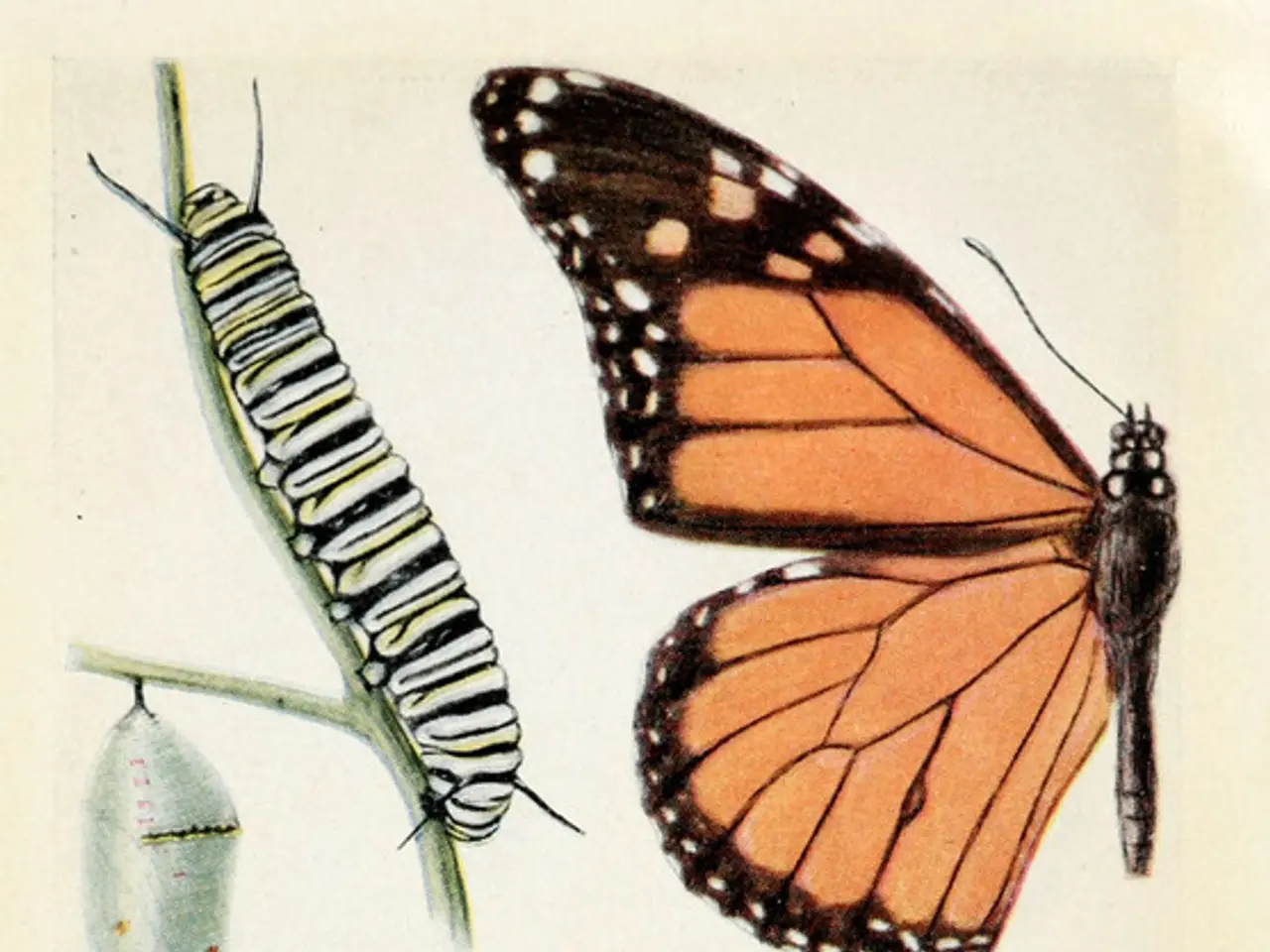Insects carrying illnesses are heading our way and could potentially prolong their stay.
In Europe, the warming climate is playing a significant role in the spread of tick-borne diseases, with the risk expected to increase and the tick season becoming longer. According to the Health Service Executive (HSE) in Ireland, up to 400 people a year are estimated to be infected with Lyme disease from ticks [1].
The highest-risk regions for future expanding tick colonisation in Europe include France, Spain, Ukraine, Germany, Italy, Poland, Romania, and the UK [2]. Climate change is facilitating the northward and altitudinal spread of ticks across the continent, making previously cold or unsuitable areas vulnerable to tick infestation.
Ireland, for instance, is experiencing an extended peak season for ticks, raising the risk of Lyme disease and other tick-borne illnesses [5]. The UK and Germany are also seeing shifts in tick distribution, with warming trends extending tick activity periods.
The consequences of climate change may include an increase in tick populations, potentially leading to more cases of Lyme disease. Lyme disease can be hard to diagnose and if left untreated, symptoms can include tiredness, aches, loss of energy, arthritis, neurological conditions such as facial paralysis, and heart problems [6].
The European Commission's environment directorate has reported that tick-borne disease risks are on the rise globally. The greenhouse effect is trapping more heat and causing global warming, which in turn is creating ideal environments for ticks to thrive [4].
To limit the risk of a tick bite, it is advised to stick to paths, cover up with long sleeves and long trousers, especially when walking in wooded areas, and use insect repellent with DEET [7]. Ticks are most likely to bite children around the head and neck [8]. Preventing tick bites prevents Lyme disease [9].
As public health systems across Europe prepare for increased tick-borne disease incidence, awareness, preventive measures, and better training for healthcare providers in at-risk regions are essential. Overconsumption and unsustainable practices are contributing to the problem by increasing demand for energy, goods, and resources [10].
In conclusion, the warmer, wetter, and longer warm seasons boost tick survival, reproduction, and host availability, expanding their habitats and increasing the incidence of diseases like Lyme. Europe, particularly northern and western regions, faces heightened risks due to extended tick seasons and expanding tick populations facilitated by climate warming [4][5]. A rise in disease-carrying ticks will have health implications for all of us.
References: [1] HSE.ie, Lyme disease. (n.d.). Retrieved from https://www2.hse.ie/conditions/lyme-disease/ [2] ECDC.eu, Ticks and tick-borne diseases. (n.d.). Retrieved from https://ecdc.europa.eu/en/healthtopics/ticks-and-tick-borne-diseases/Pages/tick-borne-diseases.aspx [3] CDC.gov, Climate change and vector-borne diseases. (2019, August 22). Retrieved from https://www.cdc.gov/climateandhealth/effects/disease/vectorborne.html [4] EEA.europa.eu, Climate change and health. (2021, March 25). Retrieved from https://www.eea.europa.eu/themes/health/climate-change-and-health [5] ECDC.eu, Tick-borne diseases in Ireland. (n.d.). Retrieved from https://ecdc.europa.eu/en/healthtopics/ticks-and-tick-borne-diseases/country-profiles/Ireland/Pages/Ireland.aspx [6] NHS.uk, Lyme disease. (2021, February 24). Retrieved from https://www.nhs.uk/conditions/lyme-disease/ [7] NHS.uk, Ticks. (2021, February 24). Retrieved from https://www.nhs.uk/conditions/ticks/ [8] CDC.gov, Preventing tick bites. (2021, February 24). Retrieved from https://www.cdc.gov/lyme/prev/on-people/index.html [9] NHS.uk, Preventing tick bites. (2021, February 24). Retrieved from https://www.nhs.uk/conditions/ticks/prevention/ [10] EEA.europa.eu, Climate change mitigation and sustainable development. (2021, March 25). Retrieved from https://www.eea.europa.eu/themes/climate-change/climate-change-mitigation-and-sustainable-development
- The rising risks of tick-borne diseases, including Lyme disease, are not only a concern for Europe but also a significant challenge in the realm of medical-conditions and chronic-diseases.
- The extended tick season in Ireland, UK, and Germany, due to climate change, is raising concerns about an increase in health-and-wellness issues caused by these diseases.
- With environmental-science indicators pointing towards an escalating global warming, the threat of tick-borne diseases exacerbated by climate change becomes even more pressing, highlighting the need for concerted action on climate change mitigation and sustainable development.




